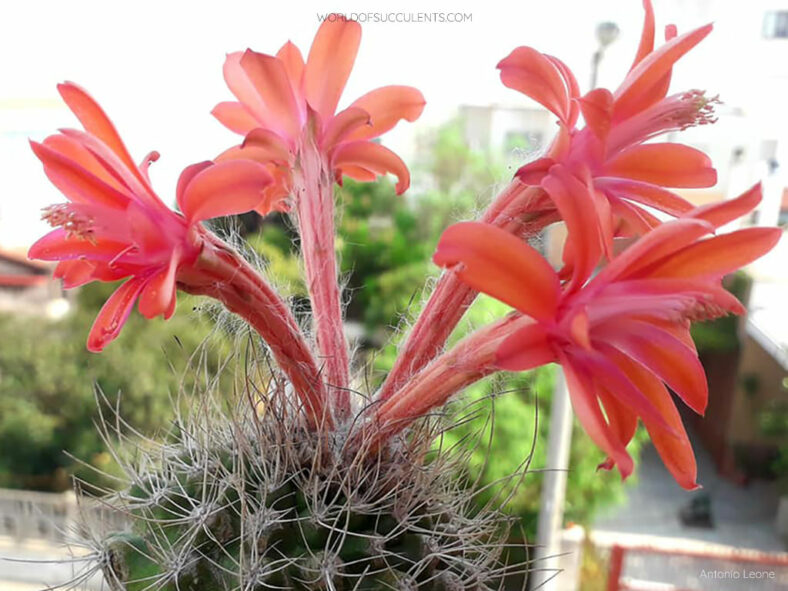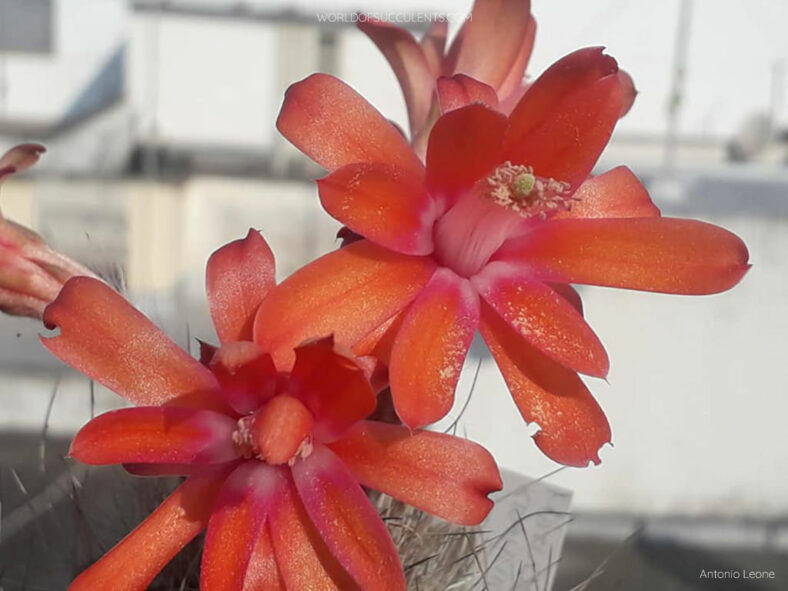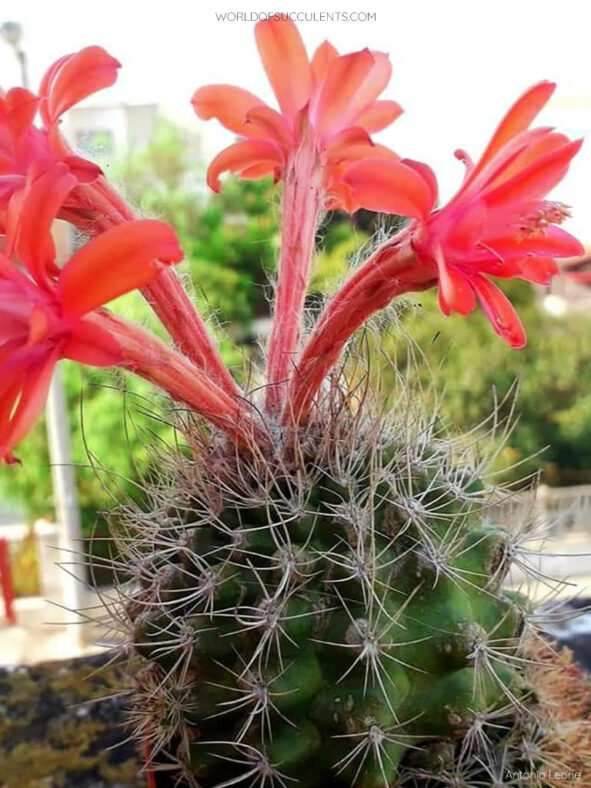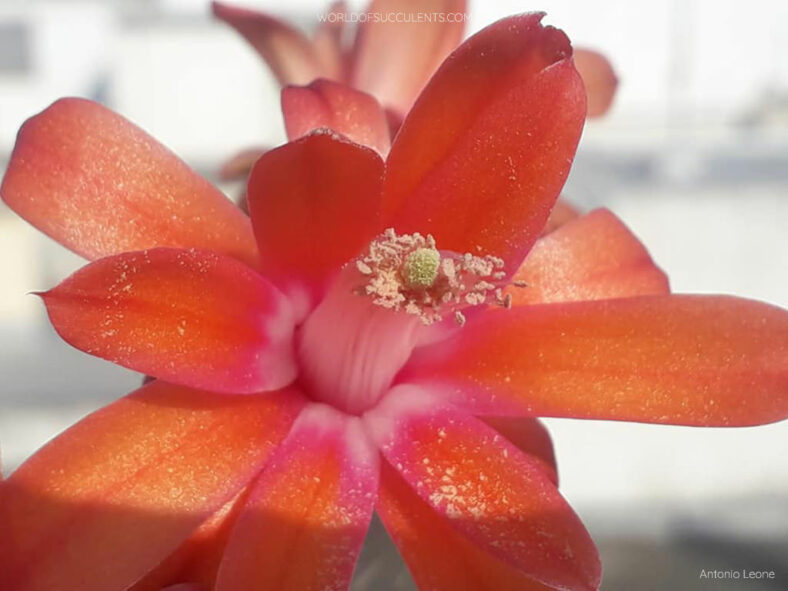Matucana krahnii was first described as Borzicactus krahnii in 1979 by John Donald (1923-1996).
Scientific Name
Matucana krahnii (Donald) Bregman
Synonym(s)
Borzicactus krahnii, Matucana calliantha
Scientific Classification
Family: Cactaceae
Subfamily: Cactoideae
Tribe: Trichocereeae
Genus: Matucana
Etymology
The specific epithet "krahnii (pronounced KRON-ee-eye)" honors Wolfgang Krahn (1939-), a German explorer and discoverer of new species of cacti and succulents in South America.
Origin
Matucana krahnii is native to Peru. It occurs north of Balsas in the department of Amazonas and grows on steep sandstone slopes at elevations ranging from 5,410 to 5,740 feet (1,650 to 1,750 m).
Description
Matucana krahnii is a small cactus with gray-green, spherical to short cylindrical stems with 10 to 18 ribs divided into tubercles widened at the base and tipped with clusters of long spines. The stems can grow up to 5.6 inches (14 cm) tall and 4 inches (10 cm) in diameter and can either be solitary or offsetting at the base. The spines are mostly curved, somewhat flexible, yellowish-brown, and become gray with age. Each areole bears 8 to 18 radial spines measuring up to 2 inches (5 cm) long and 1 to 4 central spines measuring up to 6 inches (15 cm) long.
During late spring and summer, crimson flowers appear at the top of the stems. The flowers open at night and last two to four days, reaching up to 3.4 inches (8.5 cm) in length and 2.8 inches (7 cm) in diameter. They usually tend to lean on one side. The green fruits are spherical and can grow up to 0.4 inches (1 cm) in diameter.

How to Grow and Care for Matucana krahnii
Light: Although it thrives in direct sunlight, Matucana krahnii prefers partial shade during the summer midday. If grown indoors, a sunny window is an ideal spot.
Soil: Having soil with good drainage is most important for a healthy Matucana krahnii. You can either use a commercial cactus soil mix or make your own.
Temperature: This cactus requires warm temperatures, even in winter. It grows best in USDA Plant Hardiness Zones 10b to 11b, with average minimum winter temperatures ranging from 35 to 50 °F (1.7 to 10 °C).
Watering: Since the roots of Matucana krahnii are very delicate and subject to rot, the soil should be kept as dry as possible. During the growing season, water your plant frequently, but allow the soil to completely dry out before watering again. In the winter, when it goes dormant, stop the watering.
Fertilizing: While it does not require much fertilizer, giving it some extra nutrients occasionally keeps this cactus healthy and prolongs the time for repotting. When it is not actively growing in winter, fertilizing is unnecessary.
Repotting: To keep your Matucana krahnii happy and thriving, repot it every two years into a slightly larger pot with drainage holes. The best time for repotting is in late winter or early spring.
Propagation: You can propagate this cactus from seeds or by dividing offsets. The best time for removing offsets is during spring and summer when the plant is actively growing, while late spring and early summer are ideal for sowing seeds.
Learn more at How to Grow and Care for Matucana.
Toxicity of Matucana krahnii
Matucana krahnii has no toxic effects reported. However, keep it away from pets and children as it has sharp spines.
Links
- Back to genus Matucana
- Succupedia: Browse succulents by Scientific Name, Common Name, Genus, Family, USDA Hardiness Zone, Origin, or cacti by Genus
Photo Gallery
Click on a photo to see a larger version.


